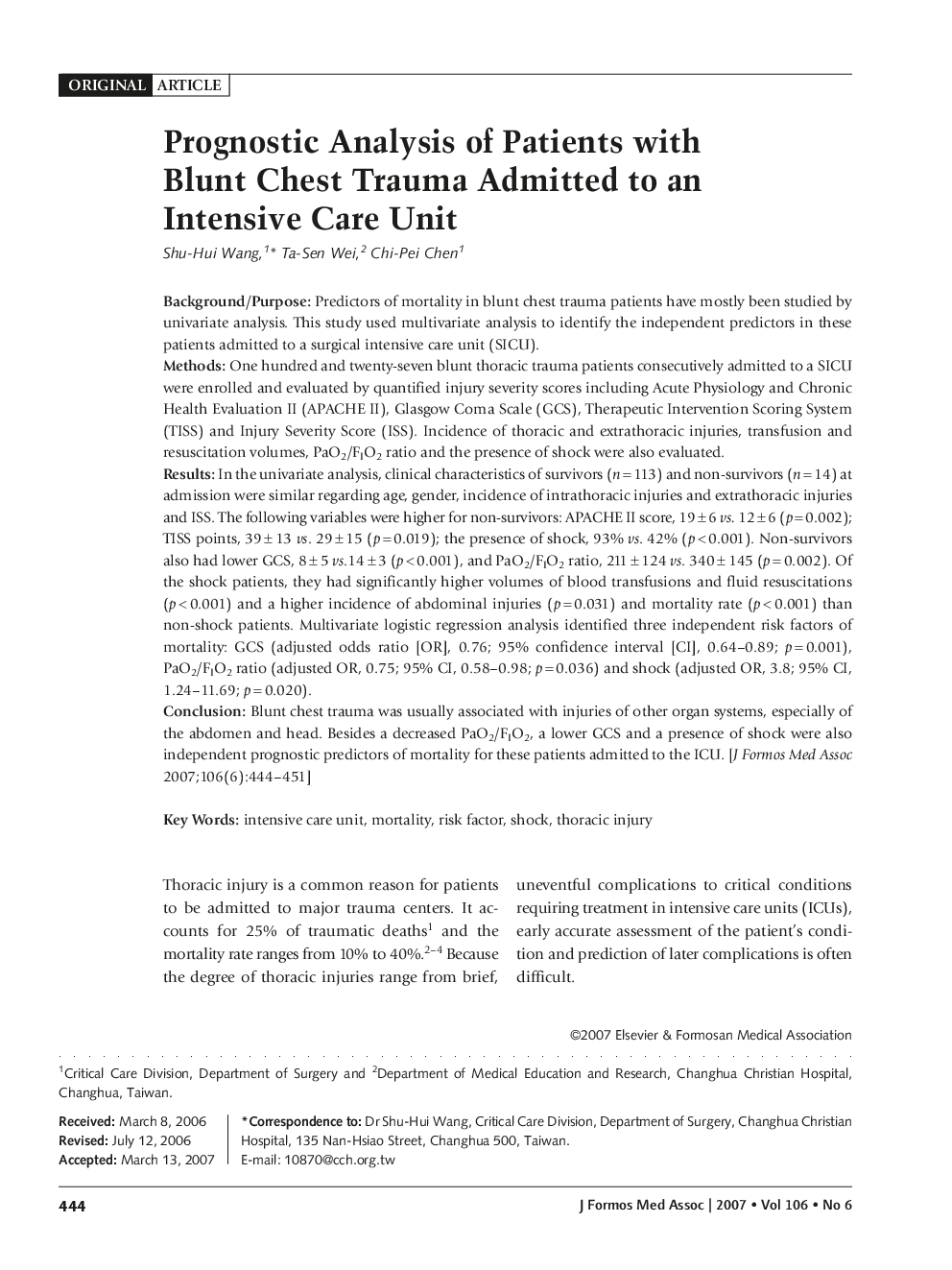| Article ID | Journal | Published Year | Pages | File Type |
|---|---|---|---|---|
| 3480979 | Journal of the Formosan Medical Association | 2007 | 8 Pages |
Background/purposePredictors of mortality in blunt chest trauma patients have mostly been studied by univariate analysis. This study used multivariate analysis to identify the independent predictors in these patients admitted to a surgical intensive care unit (SICU).MethodsOne hundred and twenty-seven blunt thoracic trauma patients consecutively admitted to a SICU were enrolled and evaluated by quantified injury severity scores including Acute Physiology and Chronic Health Evaluation II (APACHE II), Glasgow Coma Scale (GCS), Therapeutic Intervention Scoring System (TISS) and Injury Severity Score (ISS). Incidence of thoracic and extrathoracic injuries, transfusion and resuscitation volumes, PaO2/FIO2 ratio and the presence of shock were also evaluated.ResultsIn the univariate analysis, clinical characteristics of survivors (n = 113) and non-survivors (n = 14) at admission were similar regarding age, gender, incidence of intrathoracic injuries and extrathoracic injuries and ISS. The following variables were higher for non-survivors: APACHE II score, 19 ± 6 vs. 12 ± 6 (p = 0.002); TISS points, 39 ± 13 vs. 29 ± 15 (p = 0.019); the presence of shock, 93% vs. 42% (p < 0.001). Non-survivors also had lower GCS, 8 ± 5 vs.14 ± 3 (p < 0.001), and PaO2/FIO2 ratio, 211 ± 124 vs. 340 ± 145 (p = 0.002). Of the shock patients, they had significantly higher volumes of blood transfusions and fluid resuscitations (p < 0.001) and a higher incidence of abdominal injuries (p = 0.031) and mortality rate (p < 0.001) than non-shock patients. Multivariate logistic regression analysis identified three independent risk factors of mortality: GCS (adjusted odds ratio [OR], 0.76; 95% confidence interval [CI], 0.64-0.89; p = 0.001), PaO2/FIO2 ratio (adjusted OR, 0.75; 95% CI, 0.58-0.98; p = 0.036) and shock (adjusted OR, 3.8; 95% CI, 1.24-11.69; p = 0.020).ConclusionBlunt chest trauma was usually associated with injuries of other organ systems, especially of the abdomen and head. Besides a decreased PaO2/FIO2, a lower GCS and a presence of shock were also independent prognostic predictors of mortality for these patients admitted to the ICU.
